Underground Utility Location: Damage Prevention

Breaking ground at a new site is exciting. You get to dive into a new project, build from the ground up, and bring new development to the area. If you’re a construction manager or engineer in this position, though, you already know that it entails a lot of hard work and responsibility in addition to the satisfaction it brings. One of the most important responsibilities is ensuring that you are not damaging underground utilities when you begin construction. Follow these three tips to prevent any such incidents from happening.
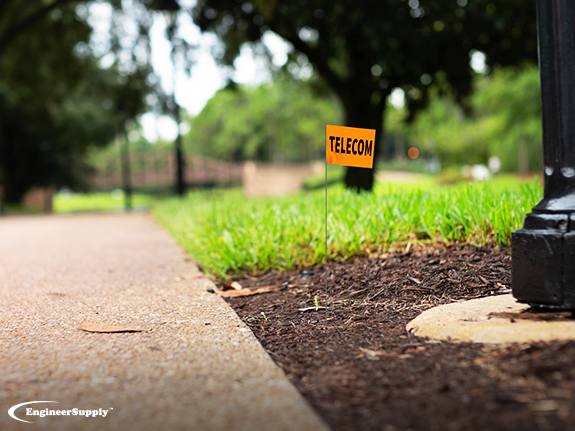
Find a Reliable Utility Locating Company
One of the easiest ways to prevent underground utility damage is to enlist help from
utility locating services. A utility locators will assess the situation and determine whether there may be any utilities located on your dig site. They will then confirm the presence of absence of utilities using one of the following methods:
- Use of ground penetrating radar to locate potential utility lines
- Concrete scanning to detect utility lines even in concrete
- Vacuum excavation to reveal the utility lines’ exact location
Each of these methods is equally effective. The key is to find a utility locator company that you trust. Reach out to providers to find one who specializes in the kind of structures you are dealing with.
Make Sure You’re Using the Right Tools
The aforementioned methods are ideal for detecting utilities, but the tools you use are just as important as your method. Ground penetrating radar is the most commonly used tool when you’re looking for an
underground utility locator, but it isn’t the only one that can be used. A simple magnetic locator can also be used to detect magnetic fields and pinpoint the location of the target. These two tools are the most common pieces of
utility locating equipment, and it’s important to find the one that’s best suited to the job site you are working on.
Always Call 811 Before You Start Digging
One of the most underutilized yet effective tools for preventing utility damage is 811. This number is the national hotline for utility location, and it’s free to call. You can access this resource 24/7 and be connected with a representative who will ask a few simple questions about where you are, where you plan to dig, and how deep you’ll be digging. They can then tell you whether or not it’s safe for you to proceed. You should always call 811 before you break ground on a new project, and as their slogan says, “know what’s below.”

Frequently Asked Questions
What kind of utility lines are located under the ground?
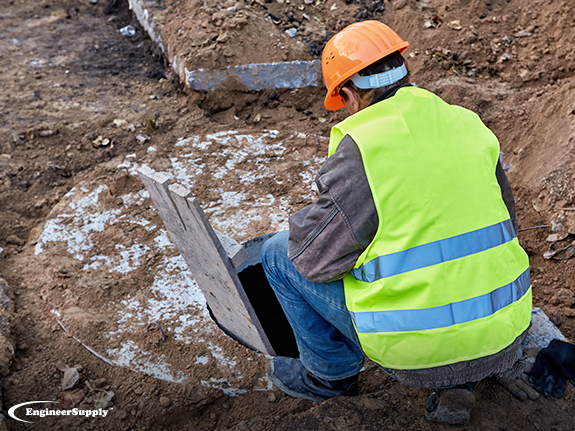
The type of utility line located underground depends on where you are, but the most common lines are gas, water, and electrical.
How likely is it that I’ll hit a utility line if I don’t check?
It’s difficult to predict the likelihood of hitting a utility line, but the larger your project is, the more likely it becomes. It’s not a chance you want to gamble with.
What happens if I hit a utility line?
Hitting a utility line is scary because the immediate effects are unknown. What happens will depend on what kind of utility line you hit. You could cause a gas or water leak, a disruption in the electrical field, or a more serious and dangerous problem.
What should I do if I do hit a utility line?
If you do hit a utility line, there are several steps you need to take. Clear the surrounding area, keep your distance from the site of the incident, and contact the utility company ASAP.
How far away from utility lines should I stay?
If you have successfully located utility lines, a safety zone will be established, which is typically four feet wide around the location of the line. Do not encroach on these boundaries when you dig.
Find the Utility Locating Equipment You Need
Locating utilities is an imperative part of any construction project. Whether you’re a builder, engineer, or site manager, you need to be sure that you are not at risk of hitting an underground line when you start digging. Calling 811 and using the right equipment can prevent this possibility, and Engineer Supply has all the equipment you need for the job. Call 800-591-8907 or shop for
utility locating equipment online.
Best Pipe Locators
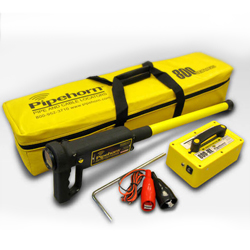
This dual-frequency underground utility locator is always recommended over Pipehorn’s single-frequency model. Because it has the 9kHz frequency that’s needed to find utility lines buried deeper underground, it has the range you need to find a number of underground pipes and cables. With its superior high-frequency performance, it's one of the best utility location tools in the industry when direct connect isn’t possible. And for the toughest conductors (such as coated iron pipes with insulated joints or street and parking lot lights), nothing else will sweep an area for unmarked utility lines than this utility locator.
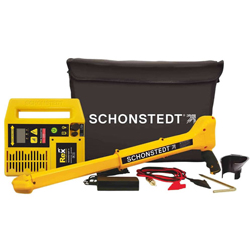
This multi-frequency pipe locator by Schonstedt is a great choice for the working professional, because it has the following features:
- The transmitter is less than 2 inches thick and weighs less than 4 pounds.
- The entire unit fits easily into a custom storage bag.
- The receiver and transmitter together weigh under 7 pounds for an ultralight design.
- The receiver can retract for easier carrying.
- Capable of 512 Hz, 33 kHz, and 82 kHz frequency detection.
- Capable of 50/60 Hz passive and 512 Hz sonde detection.
- The transmitter comes with rechargeable batteries.
This unit is built for utility professionals in the water, sewer, gas, electric, and telecommunication industries.
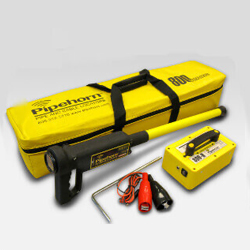
With the ability to detect frequencies of up to 480 kHz, this pipe locator can find utility lines that are buried down to 18 feet deep (depending on the type of connection, the condition of the soil, and how well it can conduct the signal). It also has a fast-response signal strength and a sharp audio tone that allows for precision pinpointing. And with a watertight reinforced receiver wand, it's incredibly durable. The transmitter has a high-impact ABS housing that’s bright yellow, so it’s easier to see.
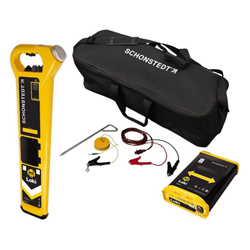
This utility locator is perfect for “sweeping” a large area to find buried assets quickly and easily. The Schonstedt Loki has a number of features that support the quick and easy detection of underground utility lines. Some of them include but may not be limited to:
- The 512 Hz frequency can be used to trace metallic pipes, while the 82 kHz frequency can find hard-to-locate jointed pipes.
- The simple mode selection matches the device to the signal type you need to locate.
- The Sonde Mode can find a signal being transmitted by a compatible sonde.
- The Transmitter Mode can find transmitter signals being imposed on buried utilities.
- The Power Mode can find the electromagnetic fields being generated by loaded power cables.
- The Dual Mode simultaneously searches for and identifies transmitter and power signals for quicker sweeps.
- The ShallowAlert feature will warn you of the possible presence of shallow cables and utility lines in every mode.
- The NoiseProtect feature allows you to use the device in areas that are electrically noisy.
Be sure to pick yours up at Engineer Supply today!
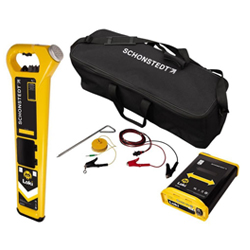
With a receiver that weighs 4.9 pounds and a transmitter that weighs 4.0 pounds, this unit is a lightweight tool that’s perfect for finding pipes, cables, and underground utility lines in large areas. It also has a IP54 rating, which makes it resistant to water and dust. The transmitter has a built-in speaker that generates an audio signal, which can be heard over road traffic. The receiver also has a detachable speaker that can double as an earpiece.
If you’re looking for an underground utility locator to help you find buried pipes and cables, be sure to look at what we have at Engineer Supply.
Please Wait...
